If you’re an audiophile that spends a significant amount of time in your car, you’ll understand the importance of having a high-quality audio system. While most car audio systems come with standard speakers, they don’t always deliver the best sound quality. This is where tweeters come in.
Tweeters are small speakers designed to reproduce high-frequency sounds that standard speakers can’t handle. They’re an essential component of any car audio system, and they can significantly enhance your listening experience.
In this guide, we’ll explore the role of tweeters in car audio systems, the benefits they offer, and the different types available. We’ll also cover the optimal placement and installation of tweeters, and advanced techniques to maximize their performance.
Key Takeaways:
- Tweeters are essential components of a high-quality car audio system.
- They reproduce high-frequency sounds that standard speakers can’t handle.
- The optimal placement and installation of tweeters can significantly enhance audio performance.
- There are different types of tweeters available, including dome tweeters, ribbon tweeters, and horn tweeters.
- Advanced techniques such as equalization and crossover settings can further enhance tweeter performance.
The Importance of Tweeters in Car Audio
When it comes to car audio systems, tweeters are essential components that play a significant role in enhancing sound quality and improving the overall audio experience.
Tweeters are responsible for reproducing high-frequency sounds, which other speakers in the system may not be able to handle. By doing so, tweeters significantly improve the clarity, detail, and accuracy of sound in a car audio system.
Without tweeters, the audio experience can be dull, lacking in detail, and high-frequency sounds may be distorted or missing entirely. Therefore, incorporating tweeters in your car audio setup is critical for achieving optimal sound quality.
“Tweeters are essential components that play a significant role in enhancing sound quality and improving the overall audio experience.”
But why are tweeters so important for car audio specifically? The answer lies in the unique acoustic properties of a car interior. In a confined space like a car, sound waves bounce off surfaces, and this can lead to distorted, muddled audio unless the speakers are positioned correctly and can handle a wide range of frequencies.
Here, tweeters come to the rescue, as they are uniquely designed to handle high-frequency sound waves and can help create a clear, immersive soundstage within a car. By complementing other speakers in a car audio system, tweeters enhance the sound quality, delivering an enjoyable audio experience that’s impossible to achieve with speakers alone.
Conclusion
In summary, tweeters are incredibly important for achieving optimal sound quality in car audio systems. They play a crucial role in enhancing sound clarity and accuracy, and their ability to reproduce high-frequency sounds is essential for creating an immersive soundstage within a confined space like a car. Therefore, when looking to upgrade your car audio system, investing in high-quality tweeters is a must.
Understanding the Role of Tweeters in Car Audio

Tweeters are an essential part of any car audio system, as they are responsible for reproducing high-frequency sounds. While most standard car speakers can handle mid-range frequencies, they struggle to reproduce high-pitched sounds effectively. This is where tweeters come in, acting as specialized speakers that focus on delivering crisp, clear high-end frequencies, making them an integral component in creating high-quality audio in vehicles.
The role of tweeters in car audio systems is to complement the mid-range and bass frequencies and provide a more balanced and accurate sound reproduction. Without tweeters, music and other audio content can sound dull and muffled, lacking the detail and clarity that is so important to the overall listening experience.
Most car audio enthusiasts believe that tweeters are not just optional, but necessary when aiming for a more immersive audio experience. Tweeters are especially important for music lovers who want to hear every detail in their favorite songs, including the vocals, cymbals, and other high-pitched instruments that can be lost with standard speakers alone.
The Benefits of Tweeters in Car Audio Systems
There are many benefits of incorporating tweeters into a car audio system. Firstly, they help to create a more natural and realistic soundstage, allowing listeners to locate sounds and instruments more precisely. Additionally, tweeters improve the detail and accuracy of audio content, ensuring that every note and sound is as clear and crisp as possible.
Another significant advantage of tweeters in car audio is their ability to enhance instrument separation. This is particularly important in music, where listeners want to be able to hear each instrument separately, resulting in a more enjoyable and immersive listening experience.
Finally, tweeters contribute to a broader sound range for the entire audio system. By reproducing high-frequency sounds with accuracy, they complete the bass, mid and treble range, to provide a full and balanced audio experience for the listener.
“Tweeters provide a more natural and realistic soundstage, allowing listeners to locate sounds and instruments more precisely.”
Overall, the role of tweeters in car audio systems is vital, and they bring many benefits to the table. Not only do they enhance the audio experience, but they help to create more accurate, clear, and detailed sound. Incorporating tweeters into a car audio setup is an essential step towards achieving the best possible listening experience on-the-go.
Types of Tweeters for Car Audio
When it comes to choosing tweeters for your car audio system, there are several types to consider. Each type has unique characteristics that affect its sound quality and performance. Here are the most popular types of tweeters for car audio:
Dome Tweeters
Dome tweeters are the most common type of tweeters used in car audio systems. They are affordable and offer good sound quality for the price. Dome tweeters use a soft dome made of silk or fabric to produce high-frequency sounds, making them ideal for reproducing vocals and instrument details.
Ribbon Tweeters
Ribbon tweeters are a step up from dome tweeters in terms of sound quality. They use a thin metal ribbon instead of a traditional dome, which allows for faster response and more accurate sound reproduction. Ribbon tweeters are also capable of producing frequencies beyond the range of human hearing, resulting in a more detailed and nuanced sound.
Horn Tweeters
Horn tweeters use a horn-shaped diaphragm to amplify and project sound waves. This design allows them to produce a louder and more dynamic sound than other types of tweeters. Horn tweeters are often used in high-end car audio systems and can reproduce extremely high frequencies with great accuracy.
Choosing the right type of tweeter for your car audio system depends on your budget and audio preferences. Dome tweeters are a good choice for entry-level systems, while ribbon and horn tweeters are better suited to high-end setups. Keep in mind that the type of tweeter you choose will affect the overall sound quality and performance of your car audio system.
Tweeter Placement in Car Audio Systems
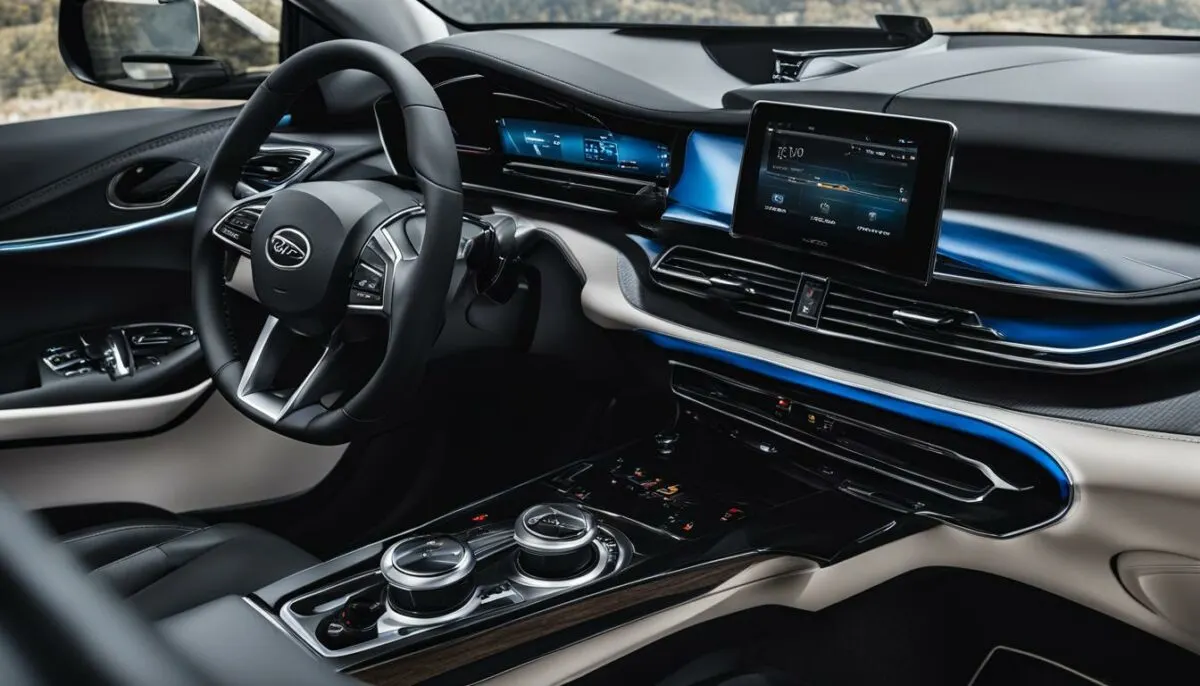
When it comes to getting the most out of your tweeters, placement is key. Proper tweeter positioning can greatly enhance the audio experience in your car.
There are a few factors to consider when determining the optimal placement of tweeters:
- The listening position of the driver and passengers
- The location of other speakers in the system
- The physical layout of the car
One common placement option for tweeters is on the dashboard, near the front windshield. This positioning can help create a more immersive soundstage and improve sound imaging.
Another popular placement option is in the doors, near the midrange and woofer speakers. This approach can help balance out the frequency response and provide uniform sound throughout the car.
Regardless of where you choose to place your tweeters, it’s important to ensure that they are angled correctly. Angling the tweeters towards the listener’s ears can help improve the clarity and accuracy of the high-frequency sounds.
It’s also crucial to properly integrate the tweeters with the rest of the audio system. Utilizing a crossover network can help ensure that each speaker is reproducing the appropriate frequency range for optimal performance.
Overall, thoughtful tweeter placement can make a significant difference in the audio quality and enjoyment of your car audio system.
How Tweeters Enhance Car Audio

Car audio systems are not complete without tweeters. Tweeters are designed to reproduce high-frequency sounds that other speakers in the system cannot handle. This ability to reproduce high-frequency sounds is what makes tweeters an indispensable part of any car audio system. In this section, we’ll explore the ways tweeters enhance car audio and the benefits they offer.
Improved Sound Clarity and Detail
The primary benefit of incorporating tweeters into a car audio system is the improved sound clarity and detail they offer. Due to their ability to handle high frequencies, tweeters can produce crisp and clear sounds that other speakers cannot. This results in a more detailed and accurate audio experience, making it easier to distinguish between different instruments and vocals.
More Accurate Sound Reproduction
Tweeters also contribute to more accurate sound reproduction in car audio systems. By reproducing high-frequency content, tweeters ensure that the audio produced is closer to the original recording. This results in a more authentic and realistic audio experience, making it feel like you’re in the concert hall or the recording studio.
Enhanced Sound Imaging and Staging
Another benefit of tweeters is that they enhance sound imaging and staging in car audio systems. Tweeters are capable of reproducing sounds that appear to come from a higher point relative to other speakers in the system. This creates an immersive and more realistic soundstage that gives the impression of being in a live performance or a movie theater.
Reproduce Harmonics
Tweeters are also capable of reproducing harmonics, which are essential for the audio experience. Harmonics are the overtones that give musical instruments their unique sound. Without tweeters, the audio system cannot reproduce harmonics, which results in a bland and uninteresting audio experience.
Overall, tweeters play a vital role in enhancing car audio. They help improve sound clarity and detail, produce more accurate sound reproduction, enhance sound imaging and staging, and reproduce harmonics. By incorporating tweeters into your car audio system, you can expect a more immersive, realistic, and enjoyable audio experience while on the road.
Benefits of Tweeters in Car Audio Systems
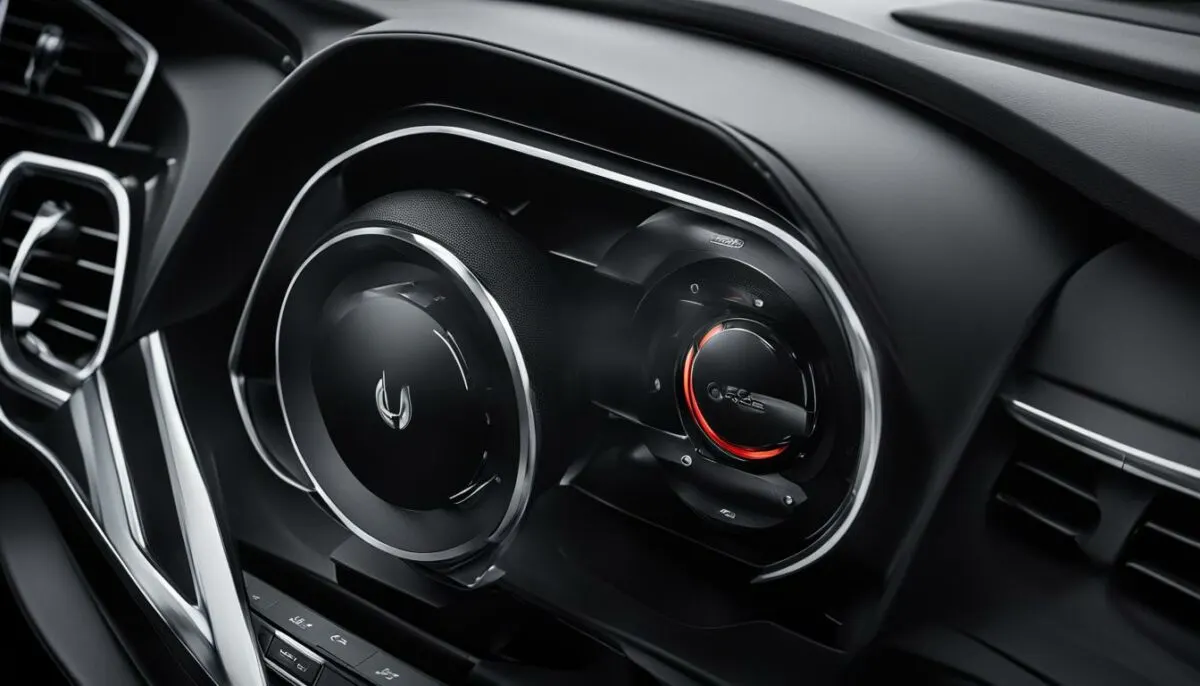
There are numerous benefits to incorporating tweeters into a car audio system. Below are some of the key advantages of using tweeters for improved car audio:
Enhanced Imaging and Soundstage
Tweeters can significantly improve the imaging and soundstage of a car audio system. With their ability to reproduce high-frequency sounds, tweeters complement the other speakers in the system and create a more immersive listening experience. Using tweeters can result in a more natural and realistic sound, with vocals and instruments appearing as if they are in the same physical space as the listener.
Better Instrument Separation
Using tweeters can also enhance the separation of instruments in a car audio system. High-frequency sounds tend to be the most directional, which means that they are easier to isolate and position in the soundstage. This increased separation can result in a more distinct and enjoyable listening experience, with each instrument or sound being clearly defined.
Improved Clarity and Detail
Tweeters are crucial for reproducing high frequencies, which are important components of most types of music. Without tweeters, these sounds can be lost or muddled, leading to a less clear and detailed audio experience. Incorporating tweeters can help to bring out the nuances in music, resulting in a more enjoyable and engaging listening experience.
Expanded Frequency Range
One of the most significant benefits of using tweeters in a car audio system is the expanded frequency range that they provide. By reproducing high-frequency sounds, tweeters can significantly extend the range of frequencies that the system can produce. This wider range can result in a more robust and complete audio experience, with music sounding richer and more detailed.
Overall, incorporating tweeters into a car audio system can result in a more immersive, enjoyable, and high-quality listening experience. With their ability to reproduce high-frequency sounds and complement other speakers in the system, tweeters are a crucial component for anyone looking to get the most out of their car audio setup.
Tweeters and Sound Imaging
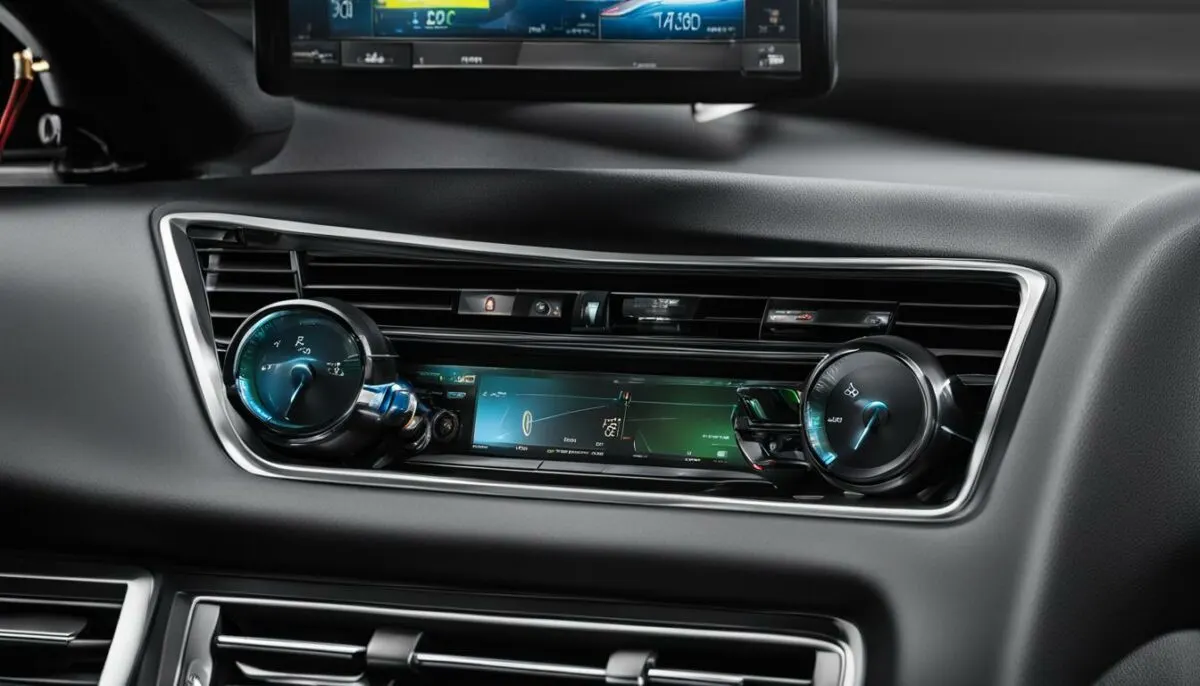
One of the most significant benefits of incorporating tweeters into a car audio system is their ability to enhance sound imaging. Sound imaging refers to the ability of a listener to determine the location of a sound source, both horizontally and vertically.
In a car audio system, tweeters play a crucial role in creating accurate sound imaging. Tweeters reproduce high-frequency sounds, which are responsible for providing directionality and detail to audio content. By producing these sounds, tweeters help listeners locate instruments and sounds within the audio mix.
Tweeters are typically mounted higher in a vehicle’s interior than other speakers in a car audio system. This placement is intentional, as it helps create a more realistic and immersive soundstage. By positioning tweeters higher, they can better reproduce directional sounds, such as cymbals, hi-hats, and other high-frequency instruments.
When installing tweeters, it is crucial to consider their placement for optimal sound imaging. Placement should take into account the listener’s position in the vehicle and the desired soundstage. In some cases, tweeters may need to be angled or aimed towards the listener to achieve the best sound imaging.
Example Table:
| Tweeter Placement | Effect on Sound Imaging |
|---|---|
| Mounted at Ear Level | Produces a more natural, realistic soundstage |
| Mounted Too Low | May result in muddled, indistinct sound imaging |
| Mounted Too High | May produce excessively directional sound imaging |
Overall, tweeters are essential components of a car audio system, improving sound quality and enhancing the overall listening experience. Proper placement and setup of tweeters can provide accurate and immersive sound imaging, creating a more realistic and enjoyable audio environment while driving.
Installation and Setup of Tweeters in Car Audio Systems
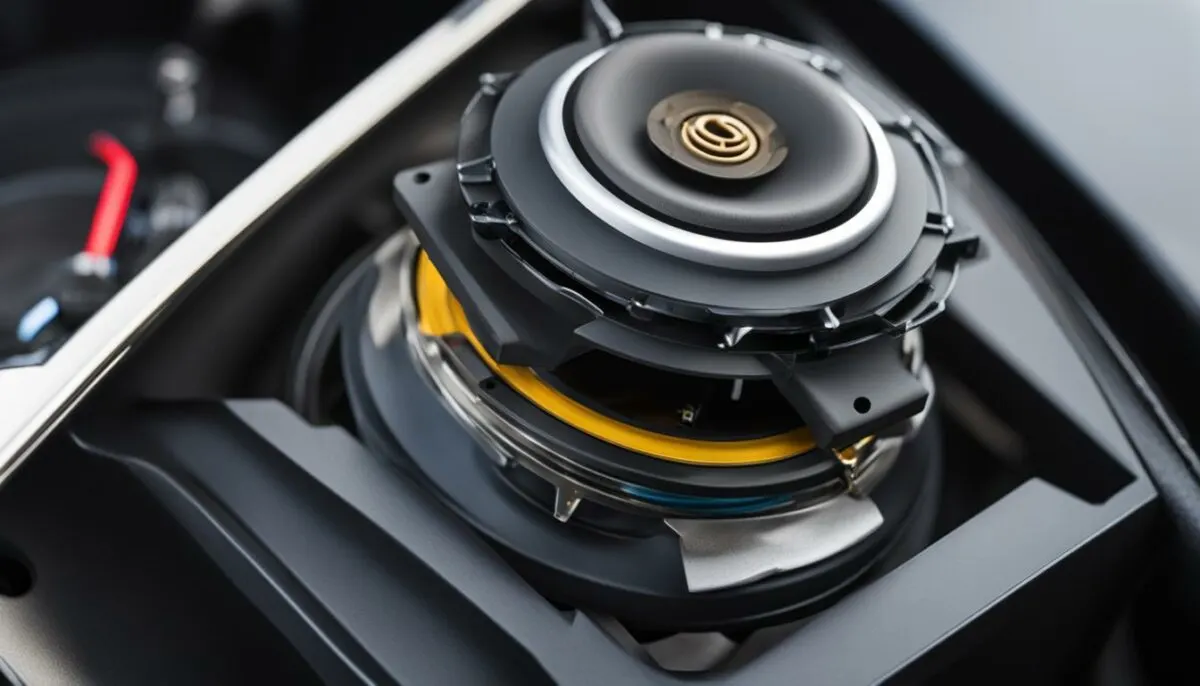
Installing and setting up tweeters in a car audio system can seem daunting, but with a few simple steps, it can be done easily and quickly. Before getting started, it’s essential to gather the necessary tools and equipment, including tweeters, mounting brackets, speaker wire, and a wire stripper.
Step 1: Choose an Appropriate Location
The first step is to select the right location for the tweeters. Typically, tweeters are mounted at ear level to optimize sound quality and imaging. On most vehicles, the A-pillars or dash locations are commonly used for tweeter placement.
Once you have decided on the location, it’s essential to ensure that it is a suitable mounting surface, and there is enough clearance behind the mounting area to avoid interference with other components.
Step 2: Prepare the Mounting Surface
After selecting the appropriate mounting surface, the next step is to prepare the area for installation. Begin by removing any existing components in the mounting area, such as grilles or covers. Then clean the surface thoroughly to ensure that it is free from any dirt, grease, or debris.
Step 3: Install the Tweeter Mounting Bracket
Most tweeters come with a mounting bracket that can be screwed or glued onto the mounting surface. Place the mounting bracket on the surface and mark the screw holes’ location with a pencil. Then drill pilot holes for the screws and attach the bracket to the surface.
Step 4: Wiring the Tweeters
Before wiring the tweeters, make sure to disconnect the battery to prevent any electrical shocks. Once the battery is disconnected, strip the ends of the speaker wire and connect them to the tweeter terminals. It’s crucial to ensure that the positive wire is connected to the positive terminal and the negative wire to the negative terminal.
Once the wiring is complete, connect the tweeter to the mounting bracket and gently position it in place. Make sure that it is securely mounted and that there are no loose connections or wires that could interfere with other components.
Step 5: Integrating with Other Speakers
After installing the tweeters, it’s essential to ensure that they are appropriately integrated with other speakers in the car audio system. This involves adjusting the crossover settings and equalization to fine-tune the sound quality and ensure that the tweeters complement the other components in the system.
Overall, installing and setting up tweeters in a car audio system is a simple process that can significantly enhance the audio experience. With the right tools, equipment, and knowledge, anyone can install tweeters and enjoy improved sound quality while driving.
Tweeters and Frequency Response in Car Audio

Understanding the frequency response characteristics of tweeters is essential for obtaining the best car audio experience. Tweeters are designed to reproduce high-frequency sounds that other speakers in a car audio system cannot, such as cymbals, triangles, and female vocals.
When selecting tweeters for improved car audio, it’s crucial to consider their frequency response. Frequency response refers to the range of frequencies that a tweeter can reproduce accurately. Generally, tweeters have a frequency response between 2 kHz and 20 kHz, with some models capable of reproducing frequencies up to 100 kHz.
There are different types of tweeters available, each with their frequency response characteristics:
| Tweeter Type | Frequency Response |
|---|---|
| Dome Tweeters | 2 kHz to 20 kHz |
| Ribbon Tweeters | 1.5 kHz to 100 kHz |
| Horn Tweeters | 1 kHz to 20 kHz |
As the table demonstrates, different tweeter types have unique frequency response characteristics. For example, ribbon tweeters can reproduce frequencies up to 100 kHz, while dome and horn tweeters have a lower frequency range.
It’s crucial to match the frequency response of your tweeters with the other speakers in your car audio system. Doing so can help ensure that all frequencies are accurately reproduced and that there are no gaps or overlaps in the audio range.
In summary, understanding the frequency response of tweeters in car audio systems is essential for achieving optimal audio performance. By selecting the right tweeters with suitable frequency response, you can improve sound clarity, detail, and accuracy, resulting in a more enjoyable and immersive audio experience while driving.
Taking Car Audio to the Next Level with Tweeters

If you’re an audiophile and want to take your car audio setup to the next level, incorporating high-quality tweeters is an excellent option. With their ability to reproduce high-frequency sounds, tweeters are essential for achieving improved sound clarity, detail, and accuracy. Here are some advanced techniques and strategies for maximizing the benefits of tweeters in your car audio system:
Equalization
Equalization, or EQ, is the process of adjusting the frequency response of your car audio system to match your personal preferences and listening environment. Proper EQ settings can make a significant difference in the quality of sound produced by tweeters. Experiment with different EQ settings to find the ones that work best for you.
Crossover Settings
Tweeters should be paired with a crossover to ensure they receive only high-frequency content. The crossover settings can be adjusted to fine-tune the performance of your tweeters. Consider experimenting with different crossover frequencies and slopes to achieve optimal sound reproduction.
Fine-tuning
Once you have adjusted your EQ and crossover settings, fine-tuning becomes critical. Take the time to listen to different tracks and adjust the settings until you achieve the desired balance of sound quality, clarity, and accuracy.
With the right techniques and strategies, incorporating tweeters can bring a whole new level of audio excellence to your car. Take the time to experiment with different settings and techniques to achieve the best possible sound quality.
Tweeter Upgrades and Tweaking for Car Audio Enthusiasts
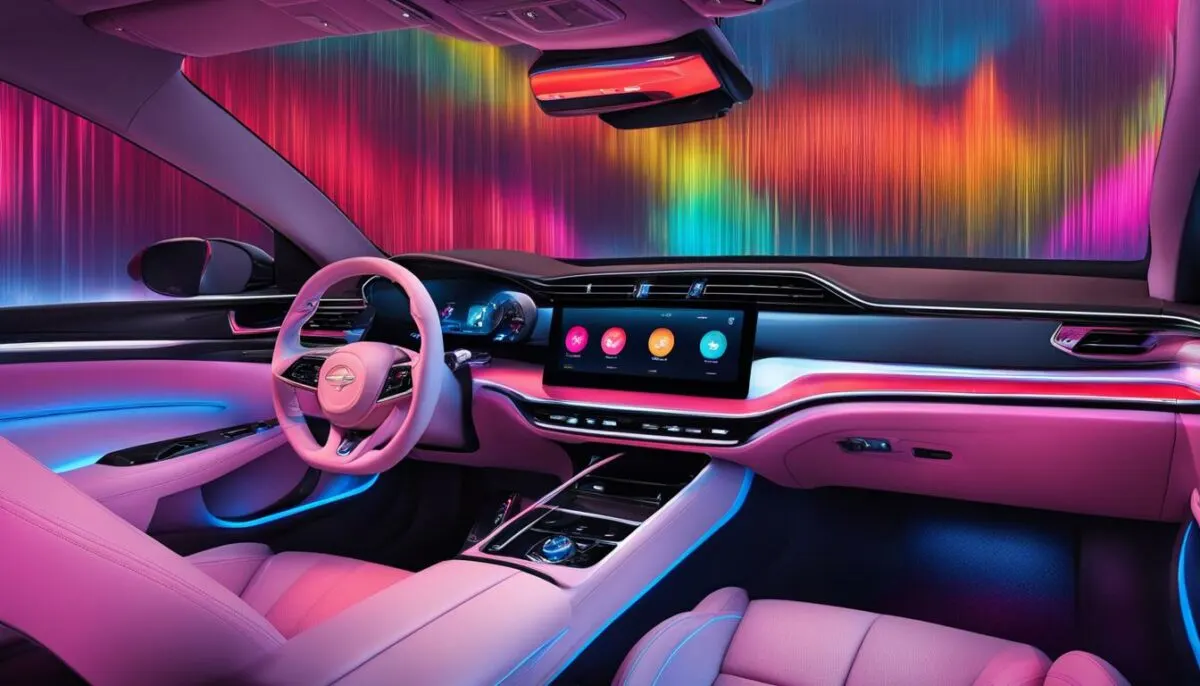
If you are a car audio enthusiast, you understand the importance of having a high-quality sound system. Upgrading your tweeters can make a significant difference in the overall audio experience. Here are some tips on how to choose the right tweeters for your car and tweak them for optimal performance:
Choosing the Right Tweeters
When choosing new tweeters for your car audio system, consider their sensitivity, power handling, and impedance. Sensitivity measures how well the tweeter can convert power into sound. Power handling refers to the amount of power the tweeter can handle without distortion. Impedance is the resistance the tweeter provides to the flow of current. Select tweeters that balance these factors to achieve the best possible audio quality.
Additionally, consider the type of tweeter that best suits your preferences. Dome tweeters are a popular choice for their smooth frequency response, while ribbon tweeters provide excellent detail and accuracy. Horn tweeters are ideal for high volume levels and efficient power transfer.
Tweaking Your Tweeters
After installing your new tweeters, tweaking them can help optimize their performance. Here are some suggested adjustments:
- Adjust the crossover point: Adjusting the crossover point can help integrate the tweeters with the rest of your car audio system. The crossover point is the frequency at which the audio signal is split between the tweeters and other speakers. Experiment with different crossover points to find the optimal balance.
- Equalize your system: Equalization can help compensate for any audio deficiencies in your car and improve overall sound quality. Use an equalizer to adjust the frequency response of your system, removing any dips or peaks in sound.
- Angle your tweeters: Tweeter placement can impact sound imaging and staging. Angle your tweeters towards the front seats for a more realistic soundstage. Experiment with different angles to find the optimal position.
- Use sound deadening materials: Vibrations and outside noise can negatively impact sound quality. Use materials such as dynamat or foam tape to dampen vibrations and minimize outside noise.
By tweaking your tweeters, you can take your car audio system to the next level and achieve optimal sound quality.
Conclusion
After exploring the topic of tweeters in car audio systems, it’s clear that these small speakers play a crucial role in enhancing the overall audio experience while driving. By reproducing high-frequency sounds and complementing other speakers in the system, tweeters contribute to improved sound quality, sound imaging, and instrument separation.
There are various types of tweeters available, from dome tweeters to ribbon tweeters and horn tweeters, each with its unique characteristics and benefits. Proper placement of tweeters is also essential, as it affects the sound imaging and staging within the car.
Overall, tweeters are an essential component in any car audio system and offer numerous benefits to drivers and passengers alike. Whether you’re a casual listener or a car audio enthusiast, incorporating tweeters into your setup can take your audio experience to the next level. By following the tips and techniques outlined in this guide, you can optimize your tweeters and enjoy high-quality audio on the road!
FAQ
What do tweeters do for car audio?
Tweeters are specialized speakers that reproduce high-frequency sounds in a car audio system. They enhance the audio experience by ensuring clear and detailed reproduction of treble frequencies.
Why are tweeters important in car audio?
Tweeters are crucial components of a car audio system because they contribute to improved sound quality. They enhance the overall audio experience while driving by reproducing high-frequency content with clarity and accuracy.
What is the role of tweeters in car audio systems?
The main role of tweeters in car audio systems is to reproduce high-frequency sounds. They complement other speakers in the system and contribute to a balanced and immersive audio experience.
What are the different types of tweeters for car audio?
There are various types of tweeters available for car audio systems, including dome tweeters, ribbon tweeters, and horn tweeters. Each type has its own unique characteristics and benefits.
Where should tweeters be placed in a car audio system?
The optimal placement of tweeters in a car audio system depends on factors such as the vehicle’s interior design and the desired sound imaging. Generally, tweeters are positioned at ear level or angled towards the listener for optimal sound staging.
How do tweeters enhance car audio?
Tweeters enhance car audio by contributing to sound clarity, detail, and accuracy. They reproduce high-frequency content that may not be adequately reproduced by other speakers, resulting in a more balanced and immersive audio experience.
What are the benefits of tweeters in car audio systems?
Incorporating tweeters into a car audio system has several benefits, including improved sound imaging, enhanced instrument separation, and a more immersive soundstage. Tweeters help create a more realistic and enjoyable listening experience in the car.
How do tweeters contribute to sound imaging in car audio?
Tweeters play a crucial role in creating accurate sound imaging within a car. They help locate sounds and create a realistic audio environment by reproducing high-frequency content with clarity and precision.
How do I install and set up tweeters in a car audio system?
Installing and setting up tweeters in a car audio system involves steps such as wiring, mounting, and integration with other speakers. It is recommended to follow the manufacturer’s instructions and seek professional assistance if needed.
What is the frequency response of tweeters in car audio?
The frequency response of tweeters refers to the range of frequencies they can reproduce. Different types of tweeters have varying frequency response characteristics, which impact their ability to handle specific frequency ranges in audio reproduction.
How can I take my car audio to the next level with tweeters?
To maximize the benefits of tweeters in a car audio setup, you can employ advanced techniques such as equalization, crossover settings, and fine-tuning. These techniques help optimize the performance of tweeters and enhance the overall sound quality in your car.
Can I upgrade my tweeters for better car audio quality?
Yes, upgrading your tweeters can improve the audio quality in your car. When choosing new tweeters, consider factors such as compatibility with your existing audio system, the desired sound characteristics, and your budget. Tweaking and adjusting settings can also help optimize the performance of your tweeters.